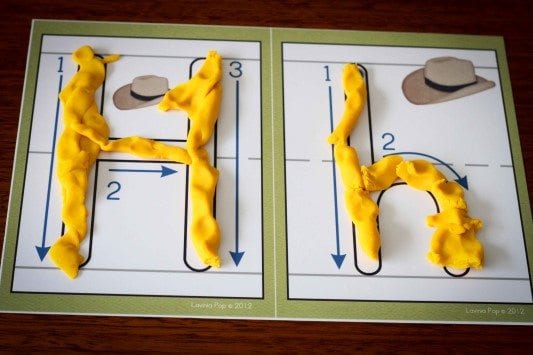Cutting and snipping activities with scissors are excellent ways for children to practice fine motor skills and control. Give your students lots of opportunities to practice their cutting skills with paper, string, card stock, even Play-Doh!
Why are writing readiness (pre-writing) skills important?
Pre-writing skills are essential for the child to be able to develop the ability to hold and move a pencil fluently and effectively and therefore produce legible writing. When these skills are underdeveloped it can lead to frustration and resistance due to the child not being able to produce legible writing or to ‘keep up’ in class due to fatigue. This can then result in poor self esteem and academic performance.
- Hand and finger strength: An ability to exert force against resistance using the hands and fingers that allows the necessary muscle power for controlled movement of the pencil.
- Crossing the mid-line: The ability to cross the imaginary line running from a person’s nose to pelvis that divides the body into left and right sides.
- Pencil grasp: The efficiency of how the pencil is held, allowing age appropriate pencil movement generation.
- Hand eye coordination: The ability to process information received from the eyes to control, guide and direct the hands in the performance of a task such as handwriting.
- Bilateral integration: Using two hands together with one hand leading (e.g. holding and moving the pencil with the dominant hand while the other hand helps by holding the writing paper).
- Upper body strength: The strength and stability provided by the shoulder to allow controlled hand movement for good pencil control.
- Object manipulation: The ability to skilfully manipulate tools (including holding and moving pencils and scissors) and controlled use of everyday tools (such as a toothbrush, hairbrush, cutlery).
- Visual perception: The brain’s ability to interpret and make sense of visual images seen by the eyes, such as letters and numbers.
- Hand dominance: The consistent use of one (usually the same) hand for task performance, which allows refined skills to develop.
- Hand division: Using just the thumb, index and middle finger for manipulation, leaving the fourth and little finger tucked into the palm stabilizing the other fingers but not participating.
Play-Doh Snakes
Flatten out a medium-size piece of Play-Doh on a flat surface. Then use a sharp object to draw a letter on the flattened area. (Make sure that the letter is large enough to be easily recognizable when filled with straws.) Cut plastic straws into one-inch segments. Let kids “trace” the letters with the colorful straw segments.
It is important to be aware of the different needs that left handed and right handed children have. As only 10% of the population is left handed, they are often left to navigate a very right handed biased world!
Imitating pre-writing shapes
When therapists use the term ‘imitate’ they mean that the child imitates movements that they have seen. So, the adult draws the shape before and with the child so that they can watch and imitate the movements. This is easier for the child as they don’t have to plan (or remember) the movement required.
Worksheets are a form of imitation as well as they provide a template for the child to work from. Some children may also need to watch the adult first to understand what to do on the worksheet. It is helpful to keep the same movements on the same sheet to help with reinforcement. So, straight lines on one sheet and curved on the next.
Recognising and matching pre-writing shapes
Being able to visually recognise and match pre-writing shapes is an important step to being able to draw them. It is impossible to draw something that you don’t have a visual representation of. For example, could you draw a saola? My guess is that most people reading this article haven’t heard of a saola and therefore won’t know what to draw.
Recognising oblique lines
A common difficulty I have seen in children with additional needs is that they struggle to identify their oblique lines. So, they see | / and \ as the same shape. These children need more support to firstly understand that a straight line (|) is different to an oblique line (/ \). I often call them ‘straight man’ and ‘falling over man’ to make the distinction. Having them physically move their bodies into the positions can also help to reinforce this.
Next, they need to understand the visual difference between / and \. Typically, these children also need support to identify the difference between straight (+) and oblique (x) crosses too. It can be helpful to use matching sheets which the child has to find one or the other of the shapes. And, also puzzles which match the different shapes.
When teaching them to draw oblique lines, it is important that the child always starts that the top of the shape. This means that you can reinforce the direction of movement. If they change where they start (i.e. between top and bottom) it is more confusing for them to learn.
Copying pre-writing shapes
Once a child can imitate a shape, the next step is copying it. By copying, I mean they can look at a pre-drawn version of it and make their own, without any help from an adult. When copying, they need to have an understanding of how to plan their movements. This is much more difficult for children with dyspraxia.
Sources:
https://childdevelopment.com.au/areas-of-concern/writing/writing-readiness-pre-writing-skills/
https://www.weareteachers.com/pre-writing-activities-for-preschoolers/
https://www.griffinot.com/pre-writing-shapes-what-are-they-and-how-to-teach-them/


